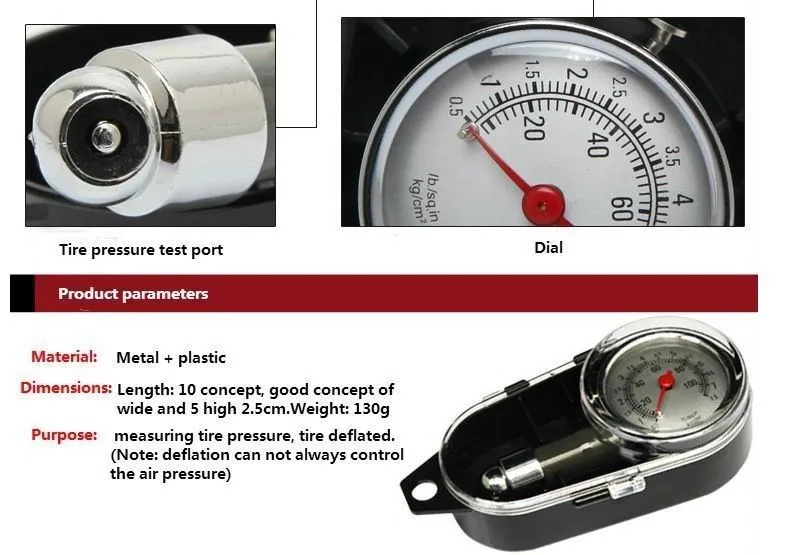Photo: istockphoto.com
Driving is a luxury that many people across the country enjoy, but if proper care isn’t taken to maintain a vehicle, it can result in rapid wear, part failure, and poor control. Tires are one of the features of a car that can sometimes be overlooked, but it’s important to ensure that you know how to use a gauge to check tire pressure. Underinflated tires increase braking distance, reduce steering control, and accelerate tire wear, which can result in complete tire failure. Overinflated tires are not as hazardous, but they can still increase tire wear, affect the wear pattern of the treads, and reduce control. To ensure that your tires are not under- or overinflated, it’s necessary to understand how to use a tire pressure gauge.
Tools & MaterialsIt’s best to check the tire pressure when the tires are cold, such as first thing in the morning or after the vehicle has been parked in the shade for several hours. This helps to increase the accuracy of the readings. In order to test tire pressure, you’ll need to purchase a viable tool such as this tire pressure gauge—a favorite in our researched guide to the best tire pressure gauges.
Advertisement
Learning how to use a low-pressure tire gauge is relatively simple, though you will need to find the manufacturer’s recommended PSI before you can begin. While it may seem like the first thing to do is take out the tire pressure gauge, that wouldn’t get you very far unless you already knew the manufacturer’s recommended PSI for the tires. Given that most people don’t typically memorize this information, it’s a good idea to check and verify before using the tire pressure gauge.
Tire and loading information is commonly included in the owner’s manual, though you may also be able to find it on a sticker on the driver’s side door, near the trunk lid, inside the fuel door, or even inside the console. Look for a two-digit number, like 35, followed by PSI, which means pounds per square inch.
Related: The Best Jump Starters With Air Compressors for Your Car
Photo: istockphoto.com
STEP 2: Locate the tire valve and remove the cap.Each tire has a valve used to inflate or deflate it, depending on the suggested PSI and the current tire pressure. The tire valve is typically a small, black tube about an inch long with a threaded cap. It can commonly be found on the inside of the rubber wheel, protruding through a gap in the hubcap. Locate this valve, then remove the threaded cap so that the tire pressure gauge can fit over the top of the valve. Make sure to keep track of the tire valve cap because it’s very small and easy to lose.
STEP 3: Press the gauge onto the tire valve.The next step to learning how to use a tire pressure gauge is to simply press the gauge down onto the tire valve after the threaded cap has been removed. Each tire valve contains a spring-loaded valve core that automatically seals itself using air pressure from inside the tire.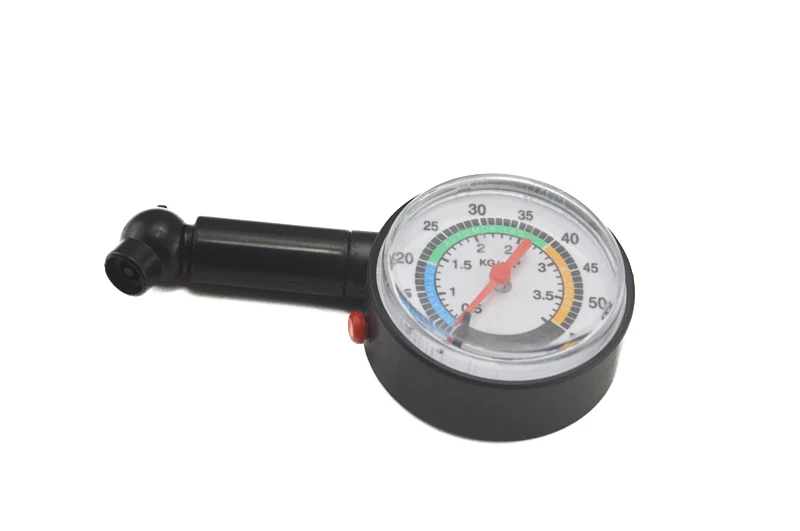 By pressing the gauge against the valve core, the gauge opens the valve to the internal air pressure of the tire and allows the gauge to act as the seal while simultaneously measuring the tire’s PSI rating.
By pressing the gauge against the valve core, the gauge opens the valve to the internal air pressure of the tire and allows the gauge to act as the seal while simultaneously measuring the tire’s PSI rating.
Advertisement
STEP 4: Check the reading on the tire pressure gauge.The tire pressure gauge should be held firmly against the open tire valve so that no air is escaping. If the tire pressure gauge is making a hissing sound, you need to adjust the angle of the gauge inside the tire valve until it is silent. This indicates that the tire pressure gauge is measuring the full tire pressure instead of getting a partial reading due to escaping air. To check the reading on the tire pressure gauge, simply read the slide ruler for manual pen gauges, the dial for dial pressure gauges, or the digital screen for digital pressure gauges. The ruler, dial, or screen should display the current tire pressure in PSI.
Photo: istockphoto.com
After taking the tire pressure measurement, write down the current pressure for each tire so that you don’t forget and need to check again. If the pressure within each tire is too high, you can easily drain some air by holding the tire pressure gauge against the tire valve at an angle, listening for the hiss of escaping air. Periodically check the tire pressure to ensure that you don’t drain too much air and stop once you reach the desired PSI.
If the pressure within each tire is too high, you can easily drain some air by holding the tire pressure gauge against the tire valve at an angle, listening for the hiss of escaping air. Periodically check the tire pressure to ensure that you don’t drain too much air and stop once you reach the desired PSI.
If the pressure within the tire is too low, connect an air compressor such as this portable inflator—a favorite in our researched guide to the best tire inflators—to the tire valve to inflate it. After inflating the tire, use the tire pressure gauge to check the PSI and make sure it is now at the correct level according to the manufacturer’s recommendations.
It’s advised to check the tire pressure on your vehicle at least once per month to ensure that you are safe while driving and not doing any unexpected damage to your tires.
Advertisement
RELATED: I Tried a Cordless Tire Inflator―Did It Work?
Final ThoughtsEffectively using a tire pressure gauge is a necessary skill for a driver to have in order to be certain that their vehicle is properly maintained.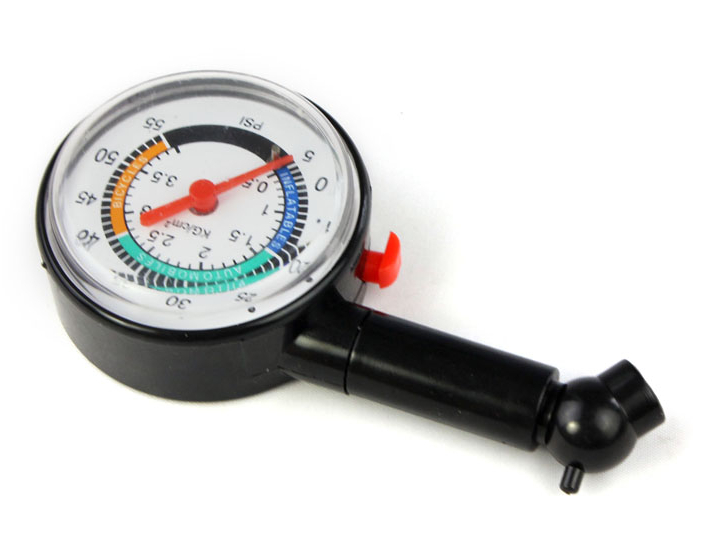 Additionally, by checking the tire pressure of the vehicle, drivers can ensure that they are getting the most out of each tire, instead of accidentally causing premature wear and tear due to overinflated or underinflated tires. Also, keep in mind that you can deflate a car tire with only a tire pressure gauge, but to fill the tire you will need access to an air compressor and a suitable attachment for filling tires. Consider investing in a home air compressor or find a local gas station that has one available for use.
Additionally, by checking the tire pressure of the vehicle, drivers can ensure that they are getting the most out of each tire, instead of accidentally causing premature wear and tear due to overinflated or underinflated tires. Also, keep in mind that you can deflate a car tire with only a tire pressure gauge, but to fill the tire you will need access to an air compressor and a suitable attachment for filling tires. Consider investing in a home air compressor or find a local gas station that has one available for use.
Advertisement
Maintaining proper tire inflation is relatively simple and essential to the overall tire performance of your vehicle. A properly inflated tire will provide longer life, quicker steering response, better fuel efficiency and a smoother ride than an improperly inflated tire. Both underinflation and overinflation can cause headaches like premature treadwear and possible tire failure. The best way to ensure you're getting the most out of your tires is to check your tire pressure on a monthly basis.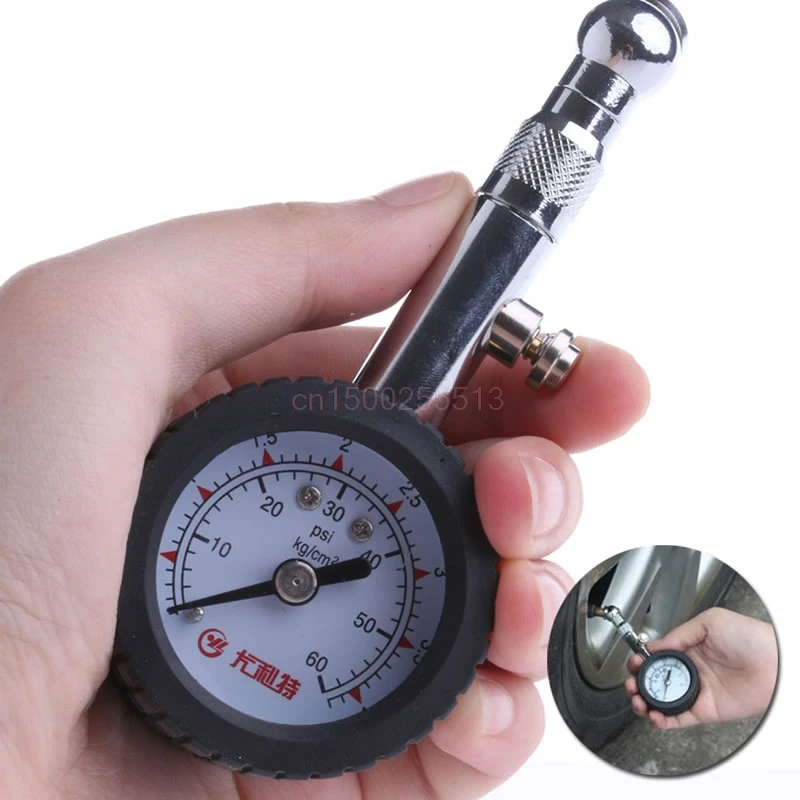
Knowing how to use a tire pressure gauge is very simple. Here’s how to check tire pressure and refill your tires.
Items You Need When Checking Tire Pressure
Tire pressure gauge
Air compressor
Pen and paper
Your tire pressure gauge can be digital or standard. Auto parts stores typically carry both. Many auto parts stores sell portable air compressors that run from your car battery or 12v power port. Alternatively, you can use the air compressor found at most gas stations. They usually cost $0.50 or $1.00 to use.
Vehicle manufacturers specify PSI – literally “pounds per square inch” of pressure – assuming tires are cold. Tires are considered cold when the vehicle has been parked for three hours or more, or if the vehicle has been driven less than a mile (1.6 km) at moderate speed. PSI is the unit your pressure gauge uses to provide readings.
Look on the driver’s side door jamb or your owner’s manual to find the recommended cold tire PSI for your front and rear tires.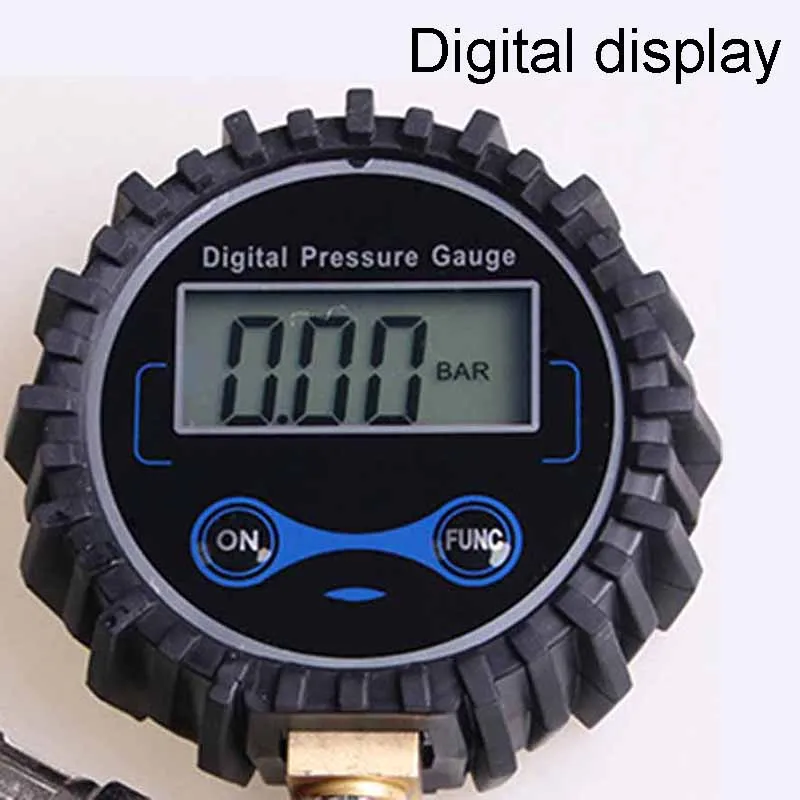 If you cannot find it, you should consult your vehicle dealer, manufacturer, or a qualified tire professional.
If you cannot find it, you should consult your vehicle dealer, manufacturer, or a qualified tire professional.
If your front and rear tires require different pressure levels, write down the correct PSI for each to avoid getting confused as you move around your vehicle checking tire pressure.
Remove the valve cap from one of your tires. Then place the pressure gauge on the valve stem and press down hard enough so the hiss sound disappears and your gauge provides a reading. With a standard gauge, the air pressure will push a small bar out from the bottom of the gauge. Measurement units are etched into the bar. A digital gauge will show you the reading on a screen.
Write down the reading and repeat this process for all four tires.
Use an air compressor to refill any tires with low pressure. Many air compressors are different, so read directions carefully to be sure you’re using it correctly.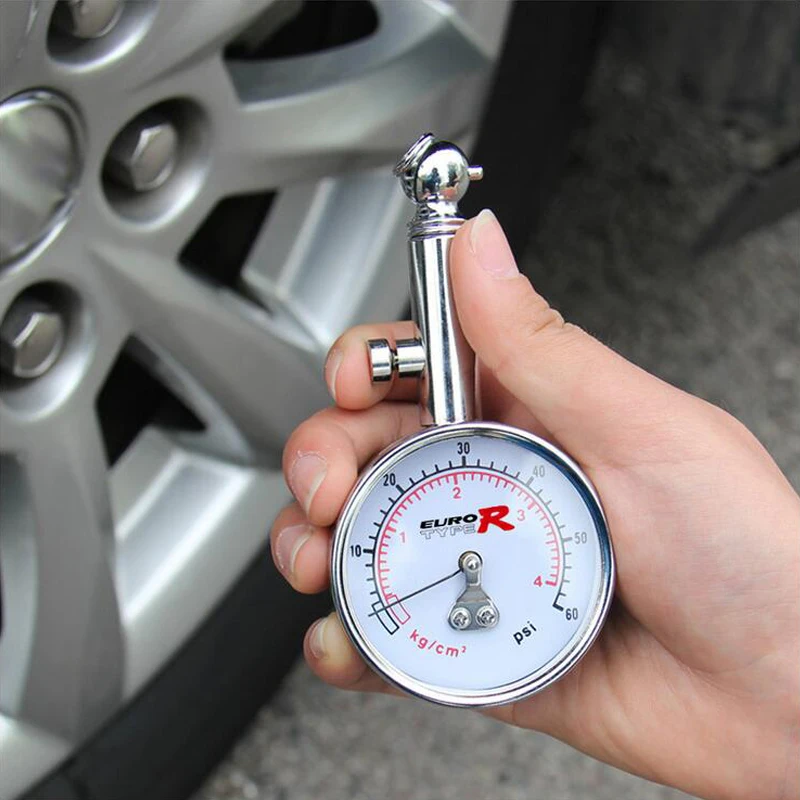
If you’re using the air compressor at a gas station, be sure to park so that the hose will reach all four tires. Insert change into the machine until you hear the motor running. Fill each tire by placing the end of the hose over the valve stem and pressing on the lever.
Using a gas station air compressor means your tires might be “hot.” If it is necessary to adjust inflation pressure when tires are “hot”, set their pressure to 4 psi (14 kPa) above the recommended cold inflation pressure. Recheck the inflation pressure when the tires are cold.
After filling your tires, use the gauge to check pressure again. At this point, it’s ok if you overfilled the tires because you can always let some air back out. Never drive on overinflated tires. Overinflation can result in decreased traction, premature wear, and decreased impact absorption.
Make the above procedure a monthly ritual. Regularly checking your tire pressure is the best way to ensure your tires never dip far below the optimal PSI.
Accuracy matters and you should keep that in mind when choosing a gauge. For just a few dollars, you can find a quality, accurate tire pressure gauge that gives accurate readings. If you’re not sure which one to purchase, ask a professional technician which he or she prefers.
A digital tire pressure gauge will provide accurate readings, but don’t forget that it operates on a battery. If you think having to replace the battery will prevent you from using it, it’s best to go with a standard gauge.
It’s best to use your personal tire gauge versus those available attached to air hoses at service stations. Of all the pressure gauges out there, they’re the most likely to be weathered, and possibly inaccurate.
There’s never a good time for a flat. That’s why Bridgestone DriveGuard tires are masterfully engineered to keep you moving for up to 50 miles at speeds up to 50 MPH without disruption.
There’s never a good time for a flat. That’s why Bridgestone DriveGuard tires are masterfully engineered to keep you moving for up to 50 miles at speeds up to 50 MPH without disruption.
That’s why Bridgestone DriveGuard tires are masterfully engineered to keep you moving for up to 50 miles at speeds up to 50 MPH without disruption.
See Details Find Your Fit
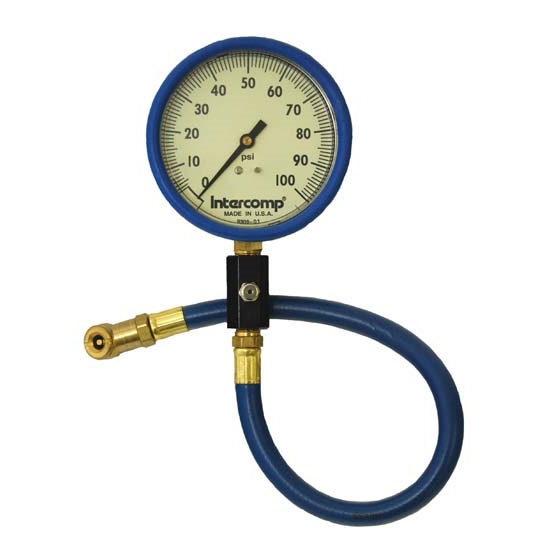 S.
S. 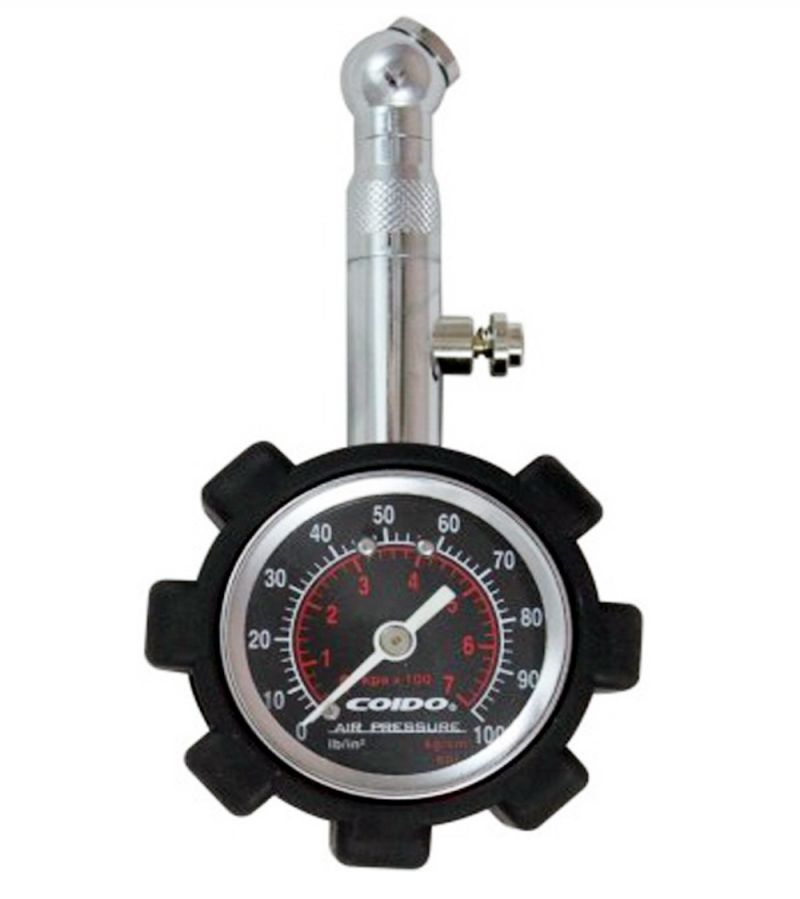 S.
S. | Vitaly Kabyshev, . Photo of manufacturers | |
| A punctured tire is always very annoying. But it is better to know about the flat tire in advance - this is where tire pressure sensors will help. |
The first patent for a tire was obtained in 1846, and since then the wheels have been constantly punctured. It is clear to anyone that a flat tire does not bode well. Yes, and dropped pressure can be very dangerous: it’s not for nothing that in the “Daily Maintenance” section of the car’s operating instructions, the item “Checking tire pressure” is one of the first.
When a tire "breathes", the rolling resistance increases significantly.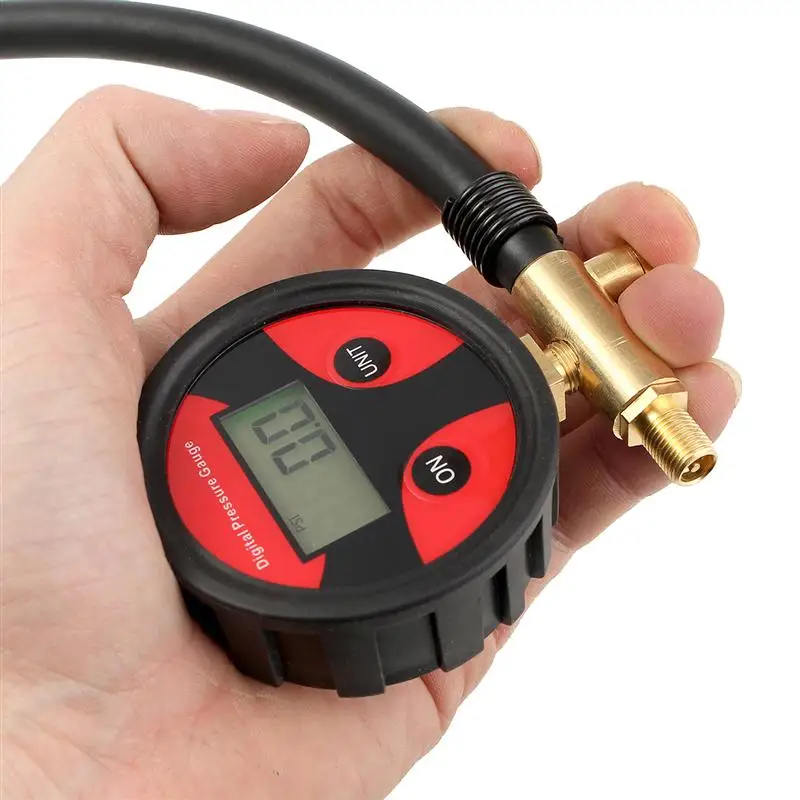 Where does this lead? To an increase in fuel consumption, increased tire wear and, of course, to the side slip of the car. Moreover, such a small drift to the side can be attributed to the slope of the road or rut. So the driver, by mistake or inexperience, can continue to move for quite some time. And the most dangerous thing about this is that in an emergency, for example, during a sharp maneuver or braking, a flat tire can break off the disc or turn over. And here it is not far from the accident.
Where does this lead? To an increase in fuel consumption, increased tire wear and, of course, to the side slip of the car. Moreover, such a small drift to the side can be attributed to the slope of the road or rut. So the driver, by mistake or inexperience, can continue to move for quite some time. And the most dangerous thing about this is that in an emergency, for example, during a sharp maneuver or braking, a flat tire can break off the disc or turn over. And here it is not far from the accident.
Therefore, this disgrace must be fought with all your might. And the sooner the driver notices the loss of pressure, the better. Of course, the easiest way is to check the pressure before the trip by connecting a pump or pressure gauge to each wheel in turn. But we are lazy and forgetful people. And the pleasure of poking around in the cold or in the rain with some kind of devices is small. Moreover, there is already a whole bunch of systems that can check this very pressure.
China-made caps signal pressure loss by changing color.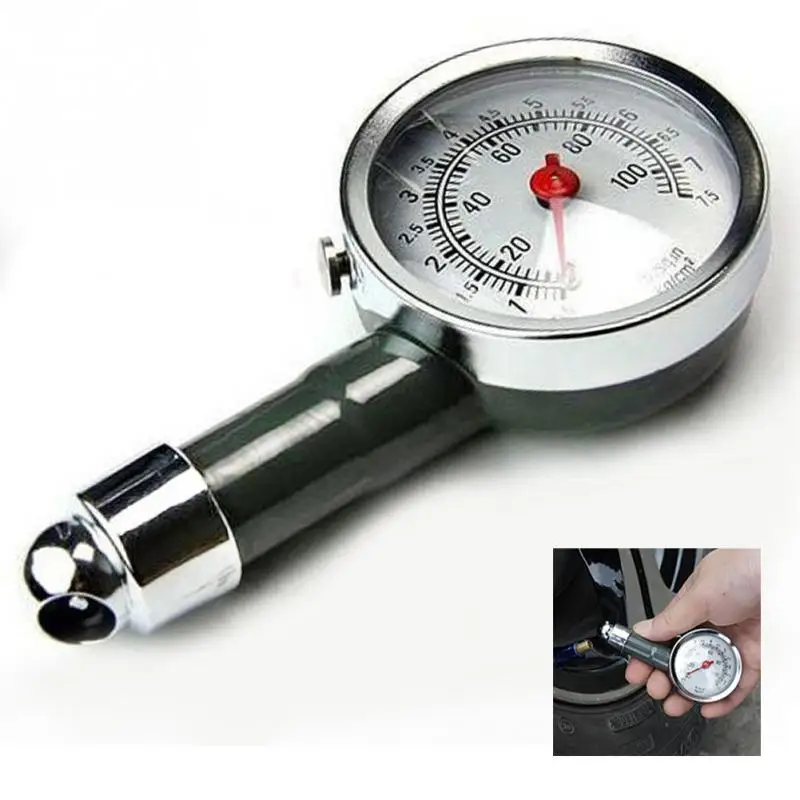 Informativeness is good, accuracy is questionable.
Informativeness is good, accuracy is questionable.
The simplest of them are special caps with color indicators that are installed instead of the standard caps on the boost valves. The pressure dropped below, say, two atmospheres - a warning yellow (orange, purple) strip will appear under the transparent cap of such a miracle cap. Yeah, it's clear that something is wrong with the wheel, we need to check. The pressure has dropped even lower - the cap will “paint” in a different, usually red color, which will indicate the criticality of what is happening. The advantage of this approach is simplicity. Minus - not enough good information content. After all, the caps can only be seen during a stop. Still, getting around the car before the trip, looking at the colors of the caps, is much easier than measuring the pressure every time.
Another disadvantage is that the caps start informing about the change in pressure only when it drops below some certain values, which, by the way, can be quite normal for your car and your wheels. So, you need to select them exactly for your car.
So, you need to select them exactly for your car.
The radio sensors of many electronic monitoring systems are mounted on the disk using special clamps.
And in order to notice something wrong while driving, it would be nice to have an electronic system on board that would automatically notify you of dangerous pressure drops. And not just notify, but would do it on time (so that there was time to orient) and without false positives.
The installed control system in this case will warn the driver at the right time about a change in the corresponding parameter and give him enough time to stop the car safely. It is clear that in cases of a serious puncture or explosion of a tire, such systems will not help, since the driver will feel the car pull without any sensors. But with a “slow” puncture, such electronics are simply irreplaceable.
There are, for example, systems that transmit tire pressure and temperature data to the central unit via radio. And there are those who can transmit this data via Bluetooth to phones or communicators. Well, it's very convenient.
Well, it's very convenient.
X-Pressure pressure monitoring system developed by Pirelli. In the simplest version of Optic, it consists of four caps that are installed on regular valves. And they signal a drop in pressure by a change in color.
But there are also more tricky systems that work without "real" pressure sensors, but through ABS. It is they who are usually put in the standard configuration of cars. How do they work?
Electronics with the help of sensors at each moment of time determines the speed of the wheels and their relative difference. As you know, when the pressure drops, the height of the tire profile becomes lower. Consequently, the speed of rotation of the wheel with the "sick" tire increases, therefore, the difference in the frequencies of rotation of the wheels on the same axle also increases. As a result, the system captures these changes - and gives an alarm signal.
Acoustic X-Pressure system. Sensors are built into the caps that register pressure, and radio transmitters that provide communication with the central unit. As soon as the pressure has dropped, a corresponding indication appears on the display of this unit and a warning sound signal is heard. Batteries in caps are enough for about 5 thousand hours of operation, which corresponds to five years of operation. Replacement of batteries in the caps is not provided, therefore, at the end of the service life, the set must be changed completely.
As soon as the pressure has dropped, a corresponding indication appears on the display of this unit and a warning sound signal is heard. Batteries in caps are enough for about 5 thousand hours of operation, which corresponds to five years of operation. Replacement of batteries in the caps is not provided, therefore, at the end of the service life, the set must be changed completely.
Why is this indirect method of determining tire pressure bad? Such systems can work, for example, in long turns, when for a relatively long time the system detects a large difference in the rotational speeds of the wheels of different sides (after all, the outer wheels spin at a higher speed than the inner ones). And these are flowers.
One of the more sophisticated X-Pressure options, AcousticBlue can transmit pressure data via Bluetooth to a mobile phone. There is such a thing from 160 euros.
In some cases, such systems are useless at all. For example, when tires with run-flat technology are installed on a car.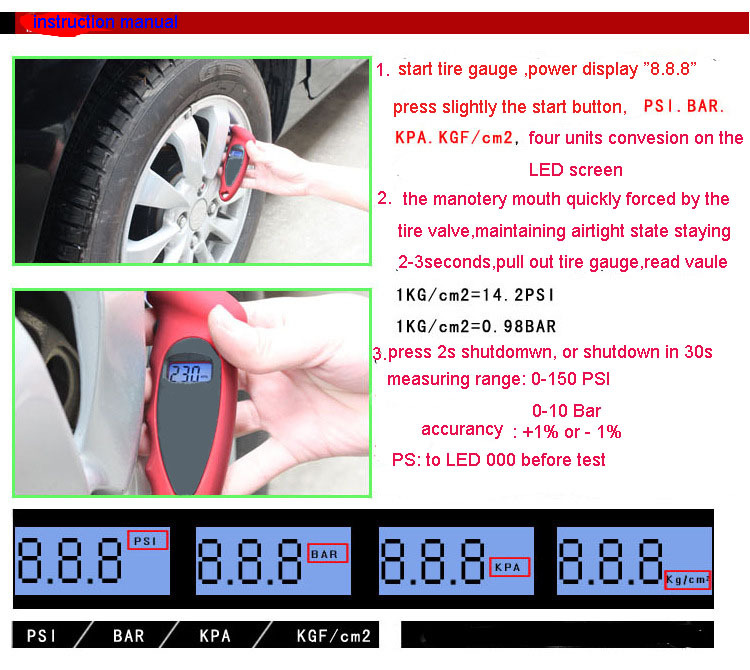 Recall that for tires with this technology, even with a complete loss of pressure, the profile height decreases slightly - by about 30-40%. There is no pressure in the tire, and the reinforced sidewalls continue to “hold”, and not just hold, but allow you to continue moving at a very decent speed, for quite a long time.
Recall that for tires with this technology, even with a complete loss of pressure, the profile height decreases slightly - by about 30-40%. There is no pressure in the tire, and the reinforced sidewalls continue to “hold”, and not just hold, but allow you to continue moving at a very decent speed, for quite a long time.
Many cars themselves warn their owner of a drop in tire pressure.
Still, this system can help a lot, especially on a long journey, warning you in time that there are problems with the wheels. But relying on "helpers" is not completely worth it. Therefore, instead of the conclusion, we will write only two, no, three words. Watch the pressure, comrades! At least once a week, and if you notice that the wheel is flat, don't be lazy, pump it up.
Comments
Share
Like
Tweet
Send
© 2005–2022 Drive LLC, media registration certificate No. ФС77-69924 16+
Full version of the site
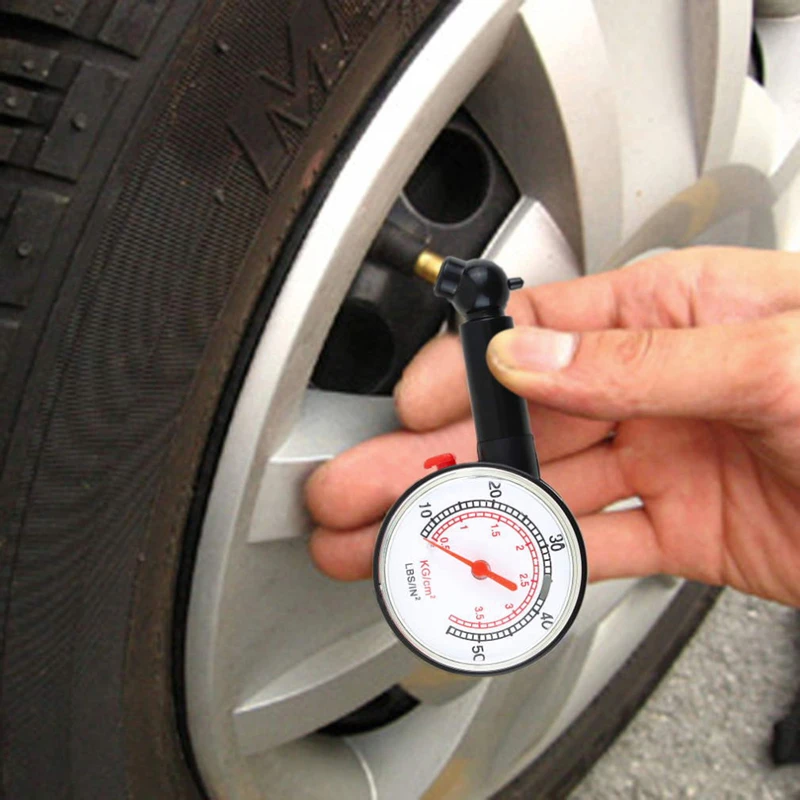 What you should pay attention to?
What you should pay attention to? In gathering the opinions of manufacturers of tire pressure and temperature sensors on the operation of these systems, we have identified a number of controversial issues. Fluctuations of which indicators are still dangerous to “miss”? What systems to prefer - external or internal execution? What to do with the "human factor"?
Anna Kvasova,Therefore, we asked Anna Kvasova, an independent expert, Stroyservice PTO engineer, to “stand impassively over the whites and reds” and share her experience with control systems.
And Anna's experience, I must say, is significant: a few years ago she was writing a Ph.D. thesis on thermal tire damage, and today she works at a large coal mining enterprise.
The duties of a specialist include, in particular, the analysis of the condition of tires on various special equipment. Therefore, we present to your attention a real professional look from the inside.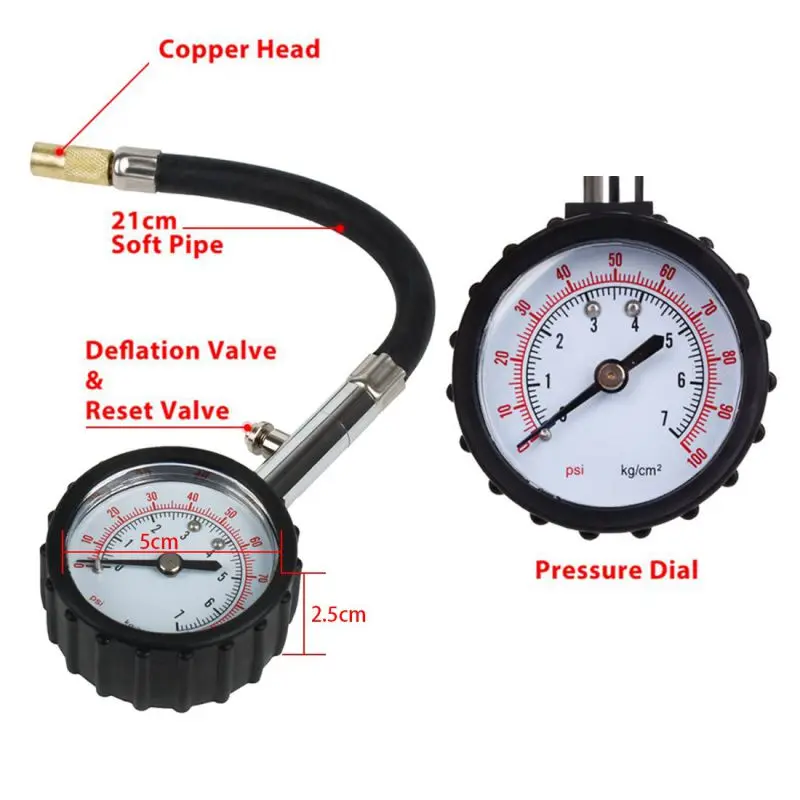
— Anna, are there many manufacturers of tire pressure and temperature monitoring systems on the market today?
- A lot, and their number is growing. When I started working on my dissertation in 2012 and did a literary review of the topic, PressurePro was mentioned more often than others - this system was the first on the market, or at least one of the first. I remember that I studied in detail in one of the scientific journals the description of the use of these sensors on the technique of the Vinogradovsky cut. Later, Chinese manufacturers appeared. Manufacturers of equipment join them.
For example, BELAZ developed its own control system - it is very close to PressurePro, but still its own. Plus tire manufacturers such as Michelin, Bridgestone, Triangle. That is, there are enough offers on the market.
- Among the sensors you mentioned, there are systems of both external and internal versions. Are they the same in functionality?
- You know, I have repeatedly argued with manufacturers of external sensors.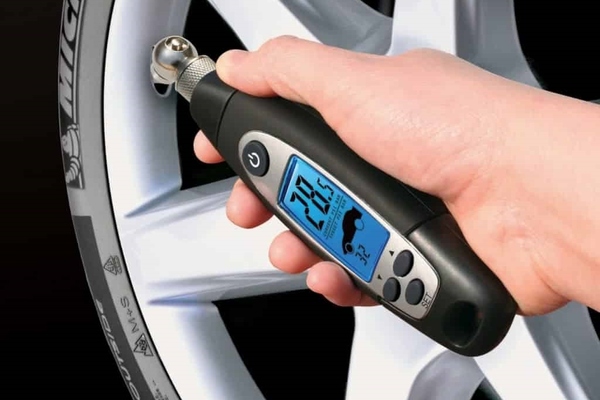 All of them are positioned as pressure and temperature sensors.
All of them are positioned as pressure and temperature sensors.
But let's figure it out: what temperature can an external sensor measure? At the stage of winding this sensor onto the valve, air enters it, and so the temperature of the air chamber of the sensor can be measured in this way. But the temperature inside the tire is most likely not, because there is no air circulation.
Imagine that one side of the car is in the shade, the other is in the sun, the performance will be completely different. And it is useless to try to derive the correlation coefficient, too many factors can influence.
But there is a nuance here: the temperature in the tire can be determined without direct measurements, by indirect indicators. Between pressure and temperature, in particular, a direct relationship: the higher the pressure, the higher the temperature.
Of course, external sensors for a large fleet are much more convenient: screw them on and go. The job takes an hour and a half.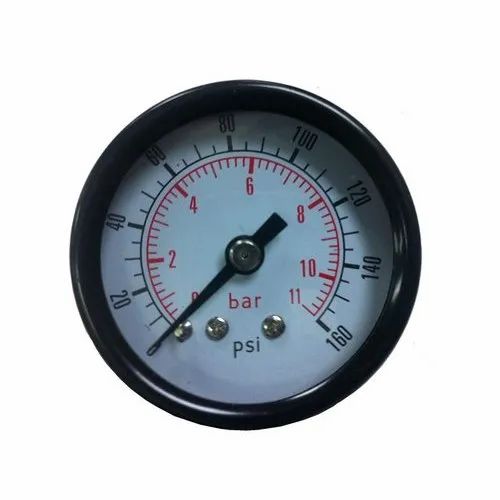 When we talk about installing internal sensors, we mean very serious work - the tire will have to be disassembled.
When we talk about installing internal sensors, we mean very serious work - the tire will have to be disassembled.
The process will take much longer. In addition, the sensor is a complex system, it can fail, which means that work will be needed to dismantle the wheel.
— What parameter should you pay attention to first of all?
- The key performance indicator for a tire is TKPH. And each manufacturer regulates it, indicating the operating conditions. And tires are divided into heat-resistant, standard and cut-resistant according to this principle. One indicator excludes the other: the more cut-resistant a tire is, the less heat resistant it is. Each owner of the equipment, respectively, chooses "rubber" for the parameters of his production.
The THHR of a tire is related to the temperature inside it. If the TKPH is exceeded, the temperature inside the tire is likely to be higher than the allowable temperature, and thermal damage is likely to occur. And at the stage of choosing tires, the enterprise must definitely plan the future of TKHF. Let's say that our mines mostly use standard tires, but at one of the sites, dump trucks travel long distances, so we decided to purchase heat-resistant tires for this mine.
And at the stage of choosing tires, the enterprise must definitely plan the future of TKHF. Let's say that our mines mostly use standard tires, but at one of the sites, dump trucks travel long distances, so we decided to purchase heat-resistant tires for this mine.
If we are talking about constant control of pressure and temperature, I would single out pressure. Let's say the sensor signals: the pressure is low. This means that the driver needs to stop, get out of the cab, inspect the tire from which the signal is received for mechanical damage that caused air leakage, and, depending on the situation, decide whether to pump this tire or send it for repair.
If the pressure is high, it is necessary to reduce the load or speed - bleed "hot" air, of course, is undesirable.
What if the temperature is too high? Ideally, you need to stop and cool down. But who, in real production conditions, will allow this to work?
Temperature sensors can help you when it comes to choosing the right tire with the right rubber compound. For example, the company cannot decide whether to take heat-resistant or standard "rubber".
For example, the company cannot decide whether to take heat-resistant or standard "rubber".
If you take a heat-resistant one, you will lose it due to tread wear: the rubber is softer, it wears out faster, but the heat dissipation is better. And here you can use the data from the temperature sensors. Today we already have an agreement with one of the tire manufacturers to equip one piece of equipment with such a system in order to track the dynamics of temperature fluctuations and select the most suitable tires for given operating conditions.
- What factors can cause a change in pressure and, as a result, temperature inside the tire?
- A sharp decrease in pressure is most likely the occurrence of mechanical damage: breakdown or cut of the tire. There were cases when, thanks to the pressure control system, it was possible to save the tire.
For example: the driver ran into an obstacle, damaged the tire, the system signaled him that the pressure had dropped, he quickly arrived for repairs. Tire repair turned out to be quick and inexpensive, because everything was done promptly. By the way: a dump truck arrived at the repair area with a pressure in a damaged tire of 5 bar - this is a very low indicator. And visually it is no different from a wheel with a pressure of 7 bar, so without special measurements the driver would not notice anything.
Tire repair turned out to be quick and inexpensive, because everything was done promptly. By the way: a dump truck arrived at the repair area with a pressure in a damaged tire of 5 bar - this is a very low indicator. And visually it is no different from a wheel with a pressure of 7 bar, so without special measurements the driver would not notice anything.
While the truck is not in operation, the tire pressure is “cold”.
The machine starts to move - the pressure along with the temperature gradually increases, as the sidewall is deformed, the layers are rubbing. For a radial tire, the norm is an increase in the initial indicators by 15%, if we fit into this corridor, then everything is in order. For example, for Michelin 33.00R51 tires, the operating pressure should be in the range of 6.8–7.5 bar. If the pressure is under 8 bar, I understand that due to the expansion coefficient of the air, the temperature has also increased, moreover, it has increased above the permissible level.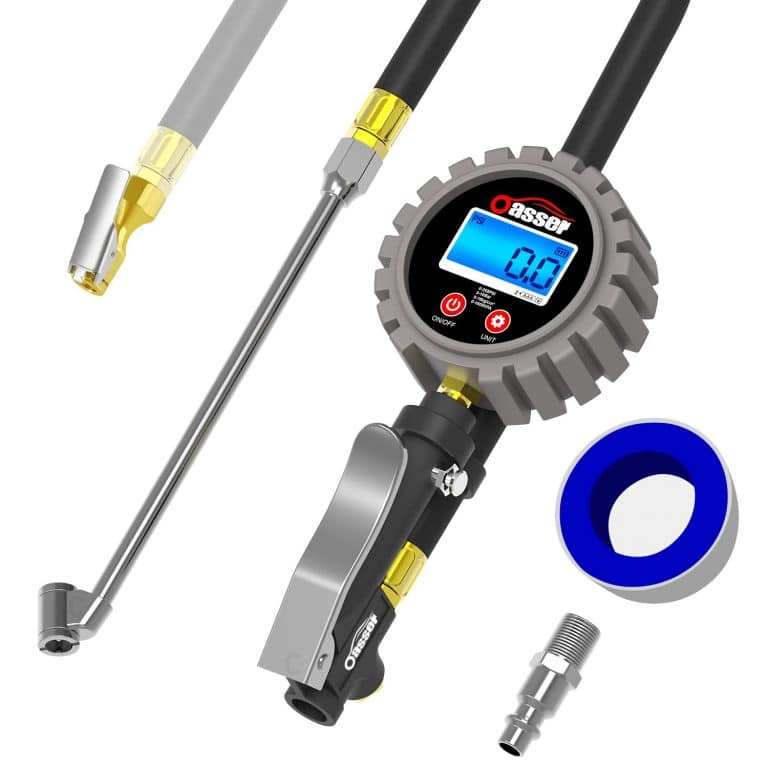 Let's say, just a few hours ago, I got a call from one of our cuts: the cars went a long distance, I need to see if everything is in order. I download the pressure data and see: on one machine it was slightly exceeded. We may have overheated it. I give recommendations: follow a specific dump truck more carefully, everything is in order with the rest.
Let's say, just a few hours ago, I got a call from one of our cuts: the cars went a long distance, I need to see if everything is in order. I download the pressure data and see: on one machine it was slightly exceeded. We may have overheated it. I give recommendations: follow a specific dump truck more carefully, everything is in order with the rest.
- Can the temperature in the tire rise sharply?
— Yes, this is possible. For example, when a dump truck is struck by electric shock or lightning. The design of radial tires implies the presence of a metal cord - through it the charge goes into the ground. The temperature inside the tire skyrockets, the pressure rises, and the tire simply bursts.
Or, say, welding work is carried out on a dump truck, the grounding was done incorrectly, and the machine is in contact with the soil through tires. And again: the charge passes, the temperature rises sharply.
That is, such cases are real, but it is rather something out of the ordinary.
- Is it possible that the tire will be operated at elevated temperatures for a long time?
— Yes, of course, this is a very common situation. In this case, thermal destruction begins in the tire: adhesion between the rubber layers and the cord deteriorates, delamination begins. It happens that you tap the tire and even hear a dull sound - there is a void under the tread. This means that the stratification has already started.
- You mentioned that it is possible to track the condition of the tires online. So, at your enterprise, sensors are integrated with the dispatching system?
— Yes, this is a very important point. The company has an automatic control system, and specialists have online access to it. The machines work on cuts - we have five of them, and I can see from my computer what pressure is in each tire at the moment.
You can track the dynamics, build a graph - if such information is needed. I see, for example, that the pressure was low, and then straightened out, which means that the driver pumps up the wheel.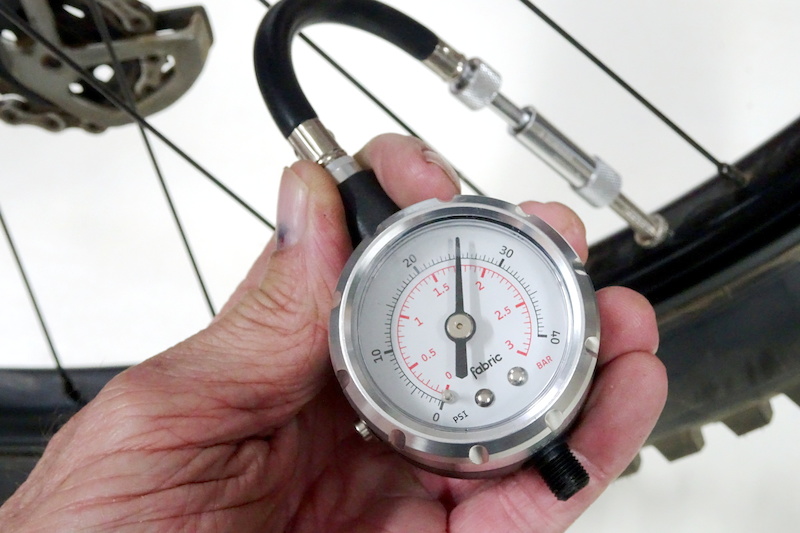 I pass the information to the mechanics: something is wrong with the wheel, pay attention. Thus, we significantly improve the culture of exploitation.
I pass the information to the mechanics: something is wrong with the wheel, pay attention. Thus, we significantly improve the culture of exploitation.
- Tire pressure and temperature monitoring systems are definitely not new on the market. But how popular are they in Russian enterprises? Are our industrialists aware of such solutions and see them as a cost optimization opportunity?
- Everyone knows about such systems, but I can't say that everyone uses them. Many people say that they only trust their pressure gauge.
But a large number of modern enterprises see such solutions as an opportunity to save money. I can say one thing for sure: the introduction of tire pressure monitoring systems significantly improves the culture of equipment operation. The latter is also largely the merit of dispatching systems. After all, it’s one thing when one driver works with the system: you never know what squeaked there, he ignored the signal and drove on.
It's quite different when a specialist is watching the process from the outside. Let's say we recently noticed low tire pressure in one of our dump trucks. The information goes to the engineer, who asks the driver why he does not respond to alarms? The driver does not take responsibility: they say, I have no time to look after the tires, I have a plan. As a result, the rebel was deprived of the award. Word of mouth works fine, we have never had such precedents again.
Or a significant story with a prototype of the Tonar-7501 dump truck.
A machine with a carrying capacity of 60 tons was presented at the Russian Coal and Mining exhibition in 2018 as an import-substituting product. In the same place, TYREMAN GROUP specialists turned to the manufacturer and offered to equip the dump truck with pressure control sensors and an online monitoring system. Tonar agreed. After the exhibition, the car went to one of our cuts on a rental basis. A few months later, representatives of TYREMAN GROUP contacted me with a request to analyze the operation of tires.